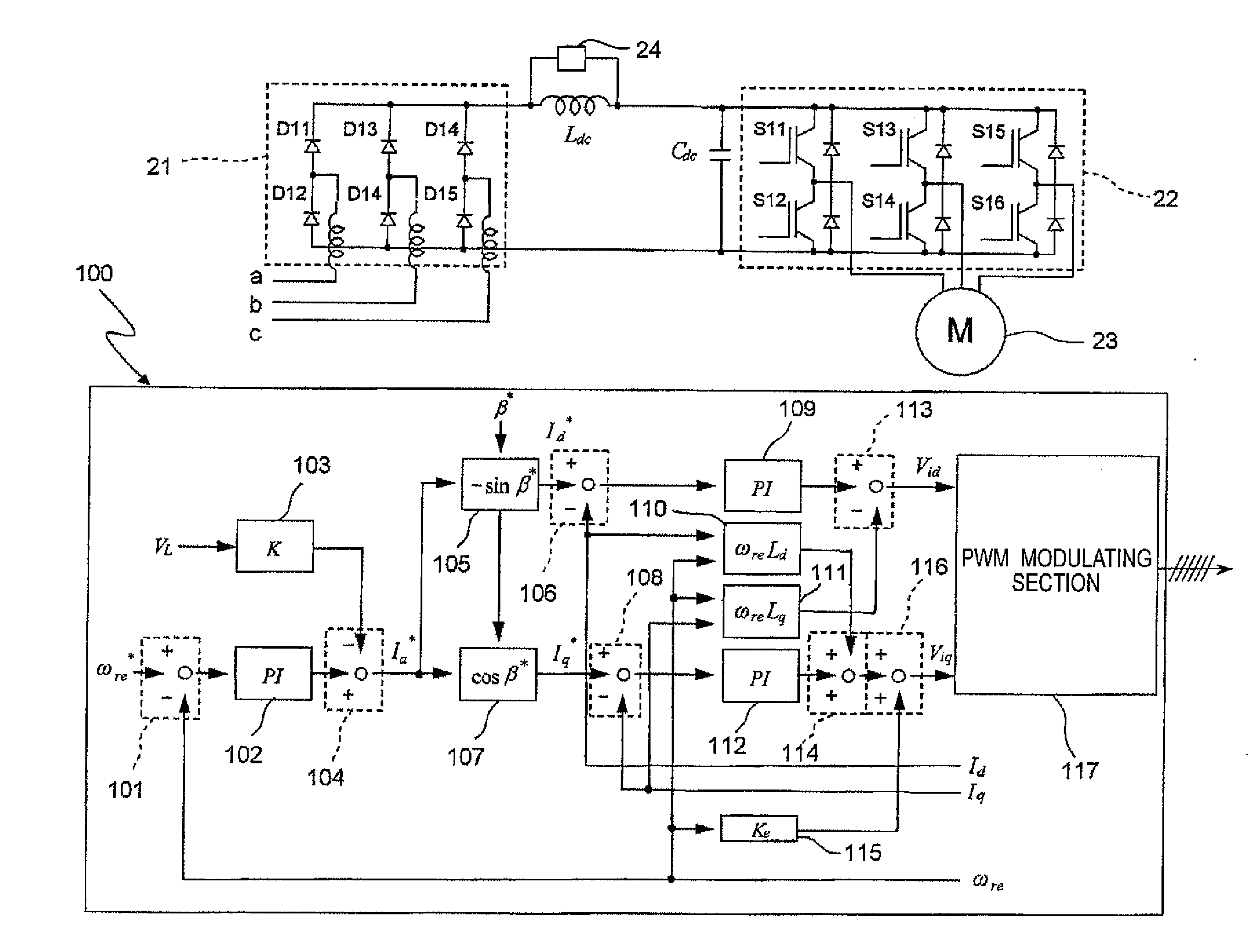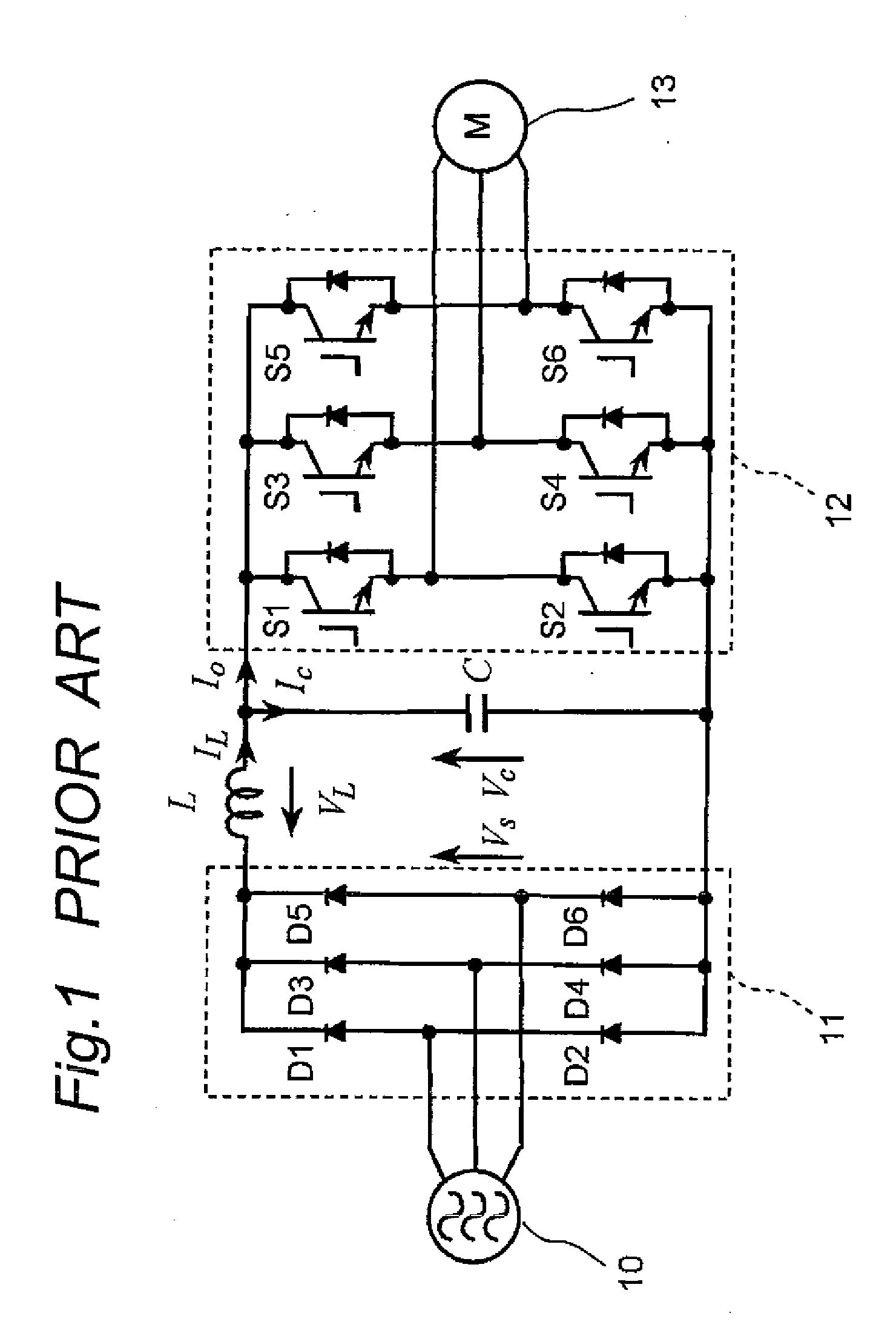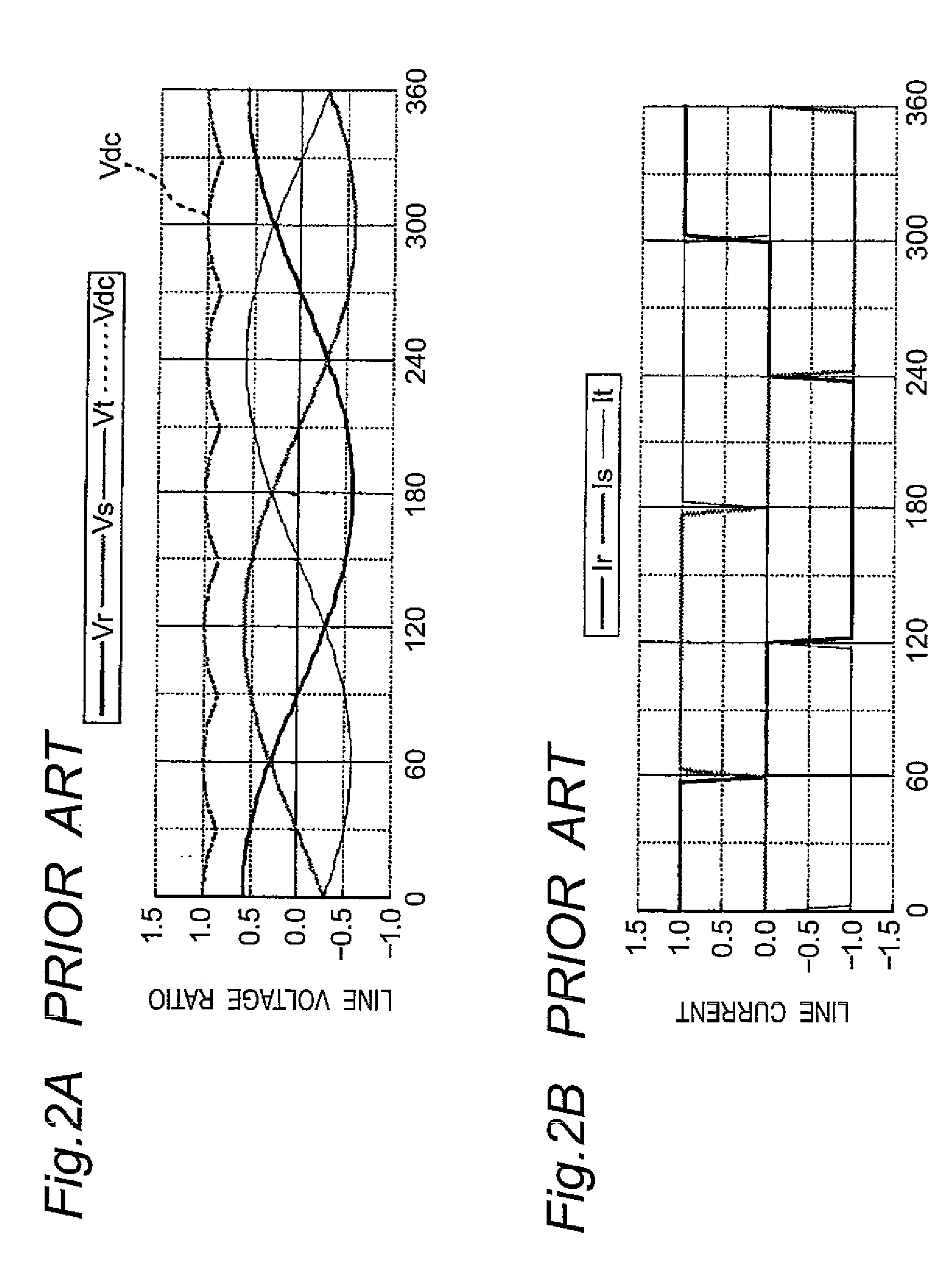Inverter
a technology of inverters and inverters, which is applied in the direction of electric generator control, dynamo-electric converter control, dynamo-electric gear control, etc., can solve the problems of low-order distortion of input current, difficulty in separating both inverter sections from each other, and increase in volume and cost of inverter sections, so as to achieve stable operation, speed control is easy to perform, and the attenuation coefficient is increased.
- Summary
- Abstract
- Description
- Claims
- Application Information
AI Technical Summary
Benefits of technology
Problems solved by technology
Method used
Image
Examples
first embodiment
[0094]FIG. 18 shows a block diagram of the inverter of the first embodiment of the invention.
[0095]As shown in FIG. 18, the inverter has a diode bridge 21 constructed of six diodes D11 through D16 that constitute a three-phase diode bridge circuit, an inverter section 22 constructed of six switching elements S11 through S16 that constitute a three-phase bridge circuit, and a control section 100 that controls the inverter section 22. Moreover, the inverter has an inductor Ldc as one example of the inductance element connected between the positive pole side output terminal of the diode bridge 21 and the positive pole side input terminal of the inverter section 22, a capacitor Cdc as one example of the capacitance element connected across the input terminals of the inverter section 22, and a voltage detecting section 24 that detects the cross terminal voltage VL Of the inductor Ldc. The inductor Ldc and the capacitor Cdc constitute an LC filter. A three-phase AC voltage from a three-ph...
second embodiment
[0115]FIG. 19 shows a block diagram of the inverter of the second embodiment of the invention. The inverter has a construction identical to that of the inverter of the first embodiment except for the control section.
[0116]The control section 200 of the inverter has:
[0117]an adder-subtractor 101 that subtracts the rotational angular velocity ωre from the rotational angular velocity set point ωre* and outputs a difference signal;
[0118]a PI controller 102 that performs PI control of a difference signal from the adder-subtractor 101;
[0119]a multiplier 103 that multiplies the cross terminal voltage VL of the inductor Ldc, detected by the voltage detector 24 by the gain k;
[0120]a conversion section 105 that multiplies the current set point Ia* from the PI controller 102 by −sin β* (β*: current phase set point) and outputs a d-axis current set point Id*;
[0121]an adder-subtractor 106 that subtracts the d-axis current value Id from the d-axis current set point Id* from the conversion section...
PUM
 Login to View More
Login to View More Abstract
Description
Claims
Application Information
 Login to View More
Login to View More - R&D
- Intellectual Property
- Life Sciences
- Materials
- Tech Scout
- Unparalleled Data Quality
- Higher Quality Content
- 60% Fewer Hallucinations
Browse by: Latest US Patents, China's latest patents, Technical Efficacy Thesaurus, Application Domain, Technology Topic, Popular Technical Reports.
© 2025 PatSnap. All rights reserved.Legal|Privacy policy|Modern Slavery Act Transparency Statement|Sitemap|About US| Contact US: help@patsnap.com



